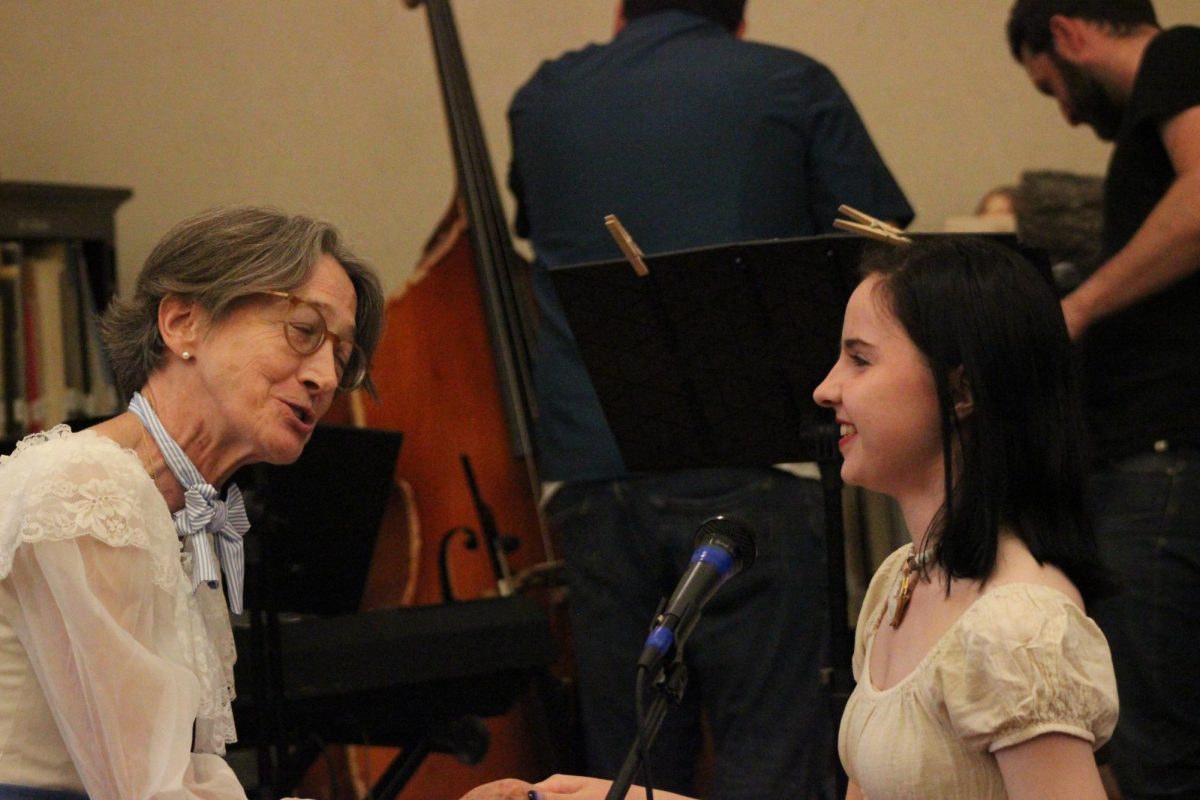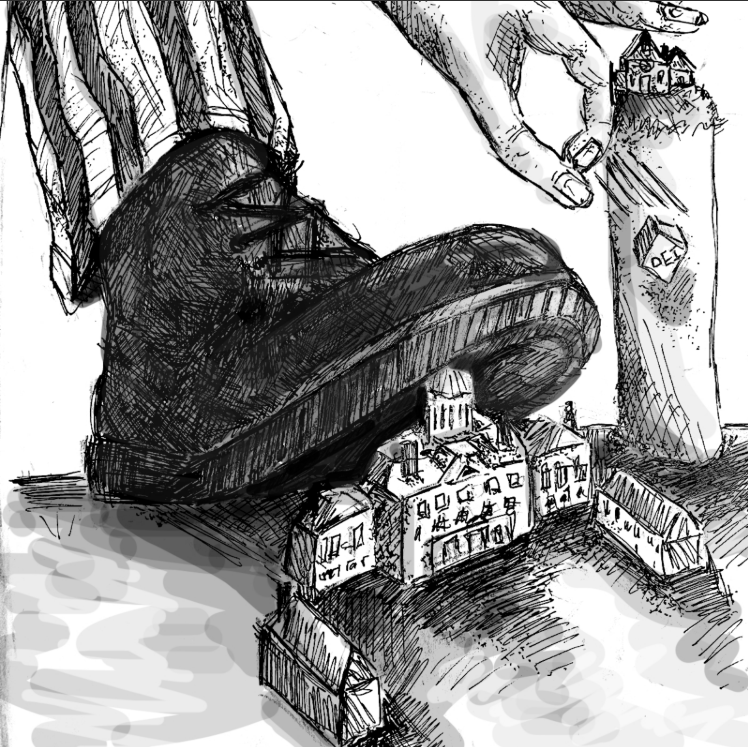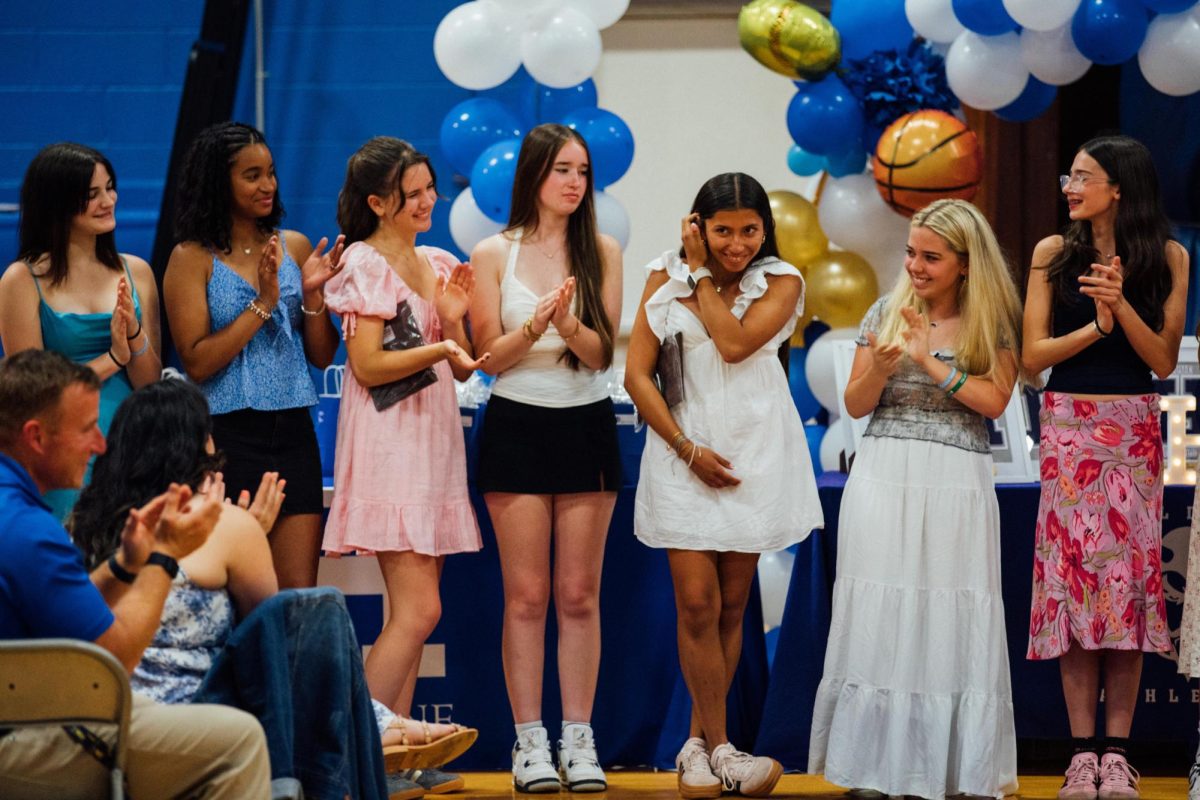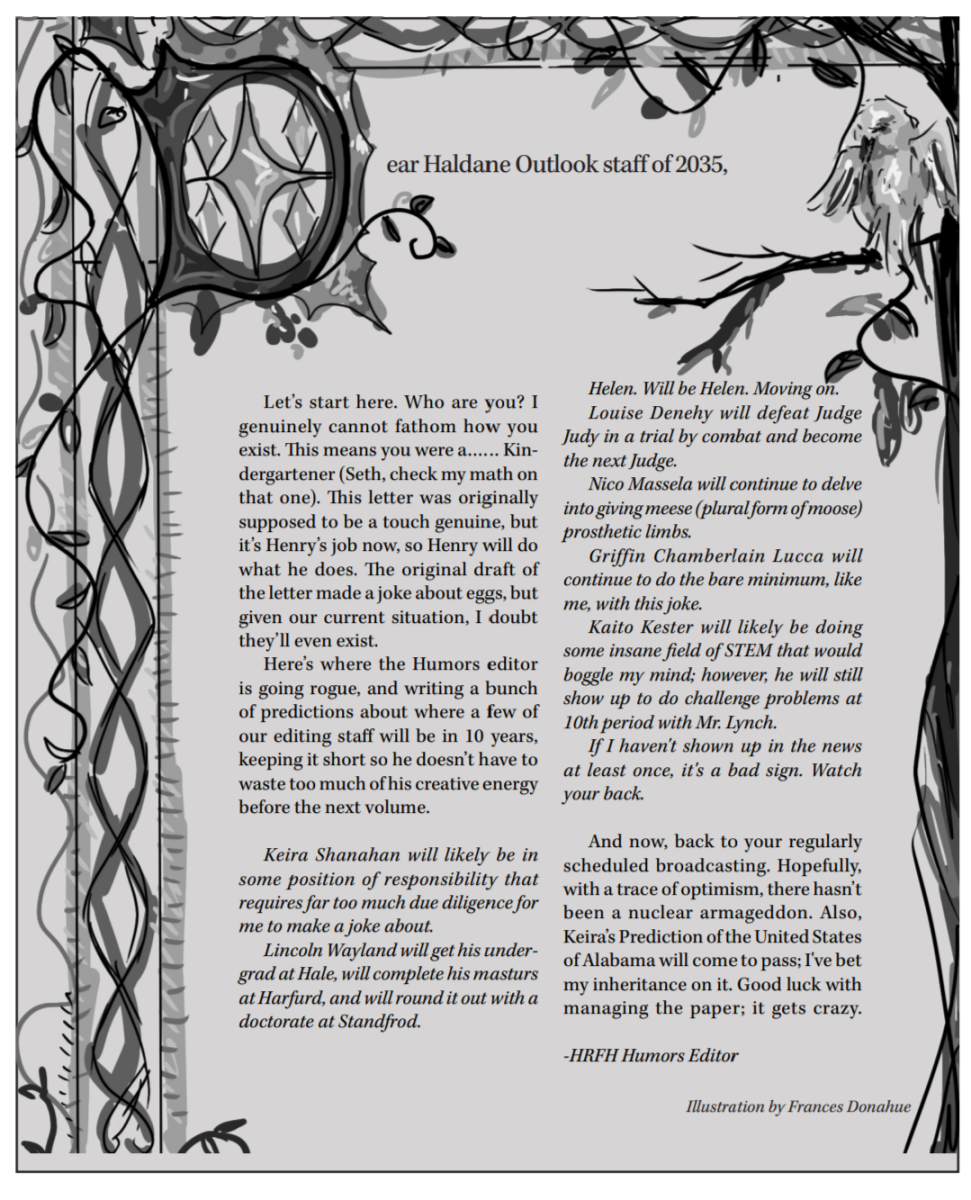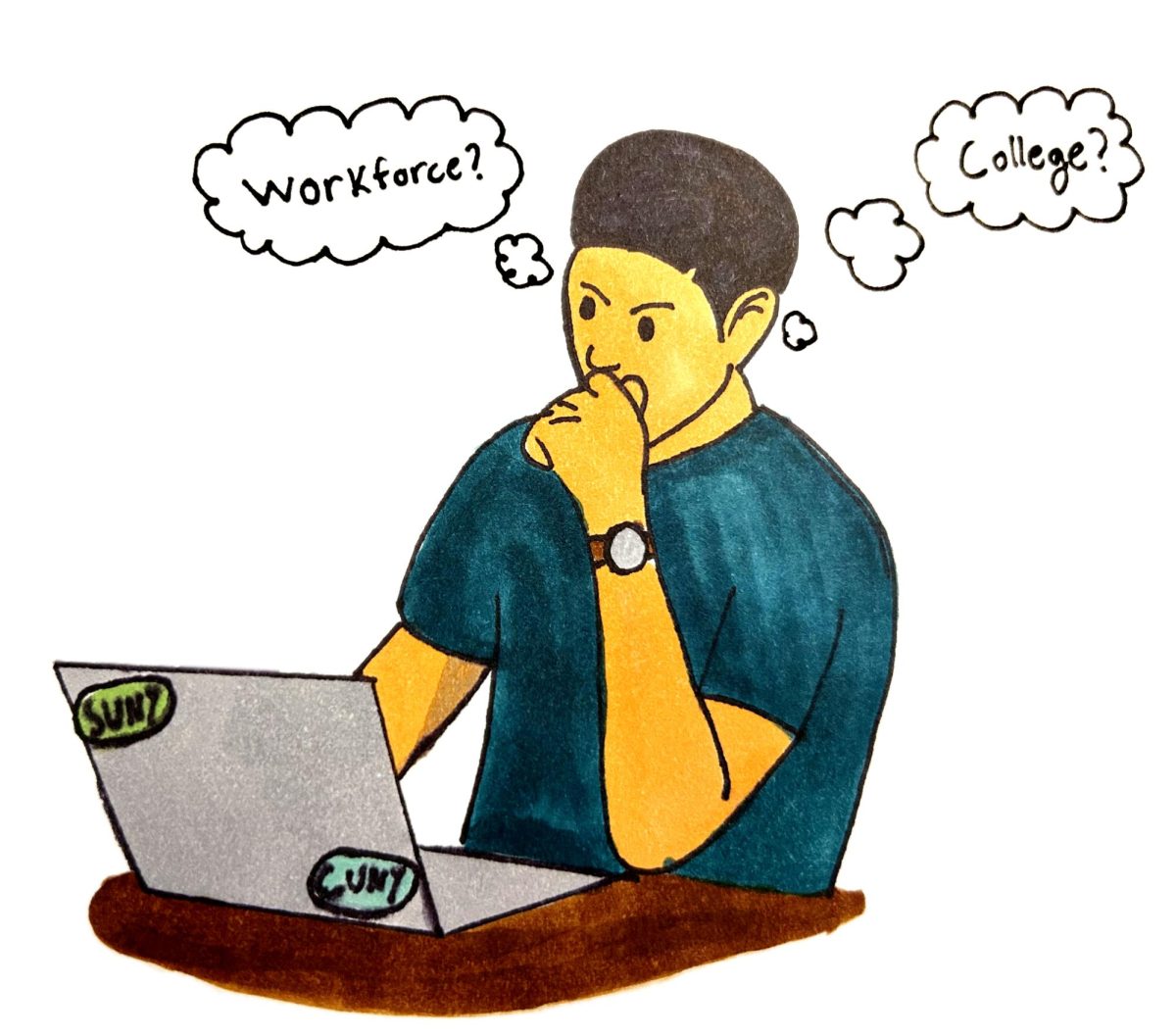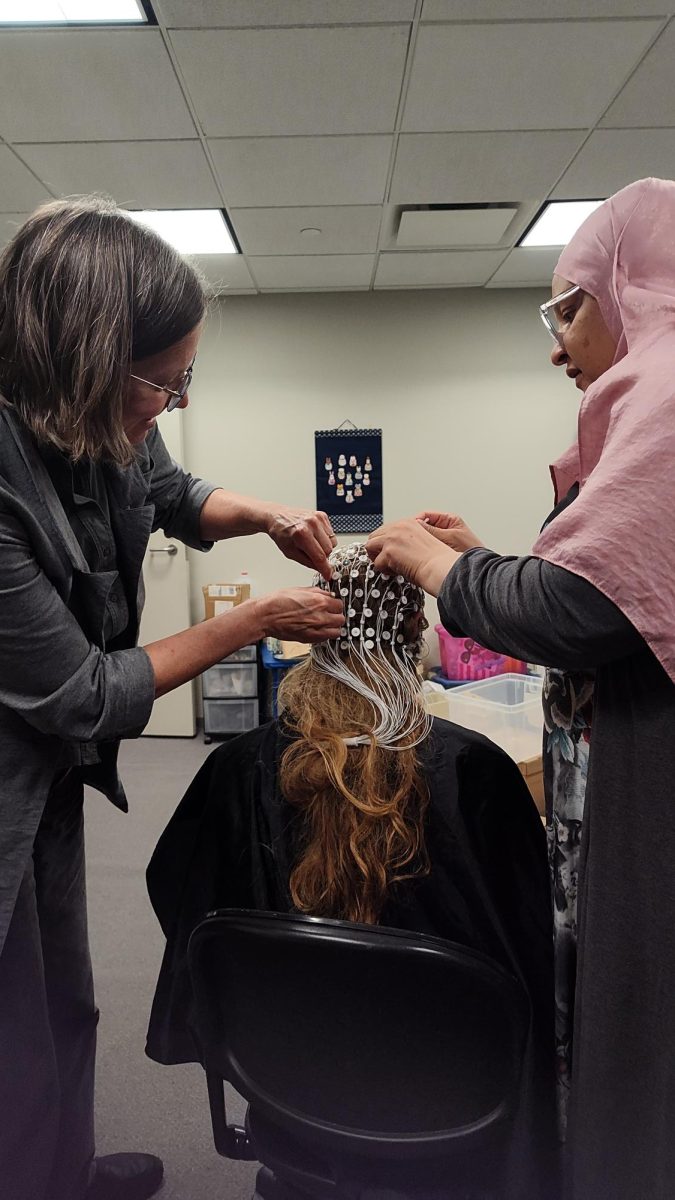It’s winter. A season of celebration and biting cold. The start of a new year and the end of an old one, and most importantly, for many seniors, it is the season of college application acceptances…or brutal rejections.
There is a searing stress in the application process, as students juggle the myriad classes they must at the same time compile their entire portfolio. They’ll need to answer questions they don’t have answers to, compose essays up to restrictive standards, and ensure they don’t fall behind in classwork. “On top of the college applications,” Senior Gabriella Perilli commented, “you need to keep up good grades that you had to have without those applications.”
Overhanging each day is a looming dread. There is waiting while they see their cadre accepted, while they try to sit patiently for a response from the institutions they have effectively given their heart to. This miserable condition only makes the shattering revelation of rejection even more devastating. It may feel like a personal slight designed to dig into the soul and tear it into pieces.
In this sad state, however, surrendering is an option unneeded. Enduring through any rejection is painful, but it is ultimately fully possible. There are ropes to grip onto to pull oneself up, and there is always room for recovery from being turned away, even from your dream school. “I believe the first thing [to do] would be to reframe,” Haldane social worker Scott Many advises. “Or ensure you have the proper framework to look at college applications.” Rejected students should take a step back from the process; they should acknowledge the disappointment but not bury themselves in it nor define themselves by whether a certain college accepts or rejects them.
A principle about colleges should be noted: their lack of a “face.” They’re an institution; it is cold and impersonal. Whenever that rejection letter arrives, the student may feel like the college is digging deep into them, that there was a personal fault in the rejected student that led the college to personally impair their future. As Many stated, however, it is important to frame this properly. An application is a fragment of a student, only a frayed edge of a wider photograph that has been torn off from its original context. These institutions do not know who a student is. By extension, their rejections cannot also dictate a student’s true worth. It is understandable to be angry, rave with sadness, or frustrated with what feels like a casting away. One can mend oneself through processing these emotions and expelling them healthily.
There is also a response from colleges between an acceptance and rejection: a deferral. This is when colleges postpone their decision to admit a student until the regular decision round of college applications so that they can compare that student who applied early to the wider pool of students who apply later on. It is not a yes or a no– just even more waiting. Senior Marc Firpo was deferred from a school. He was asked to provide a written statement on his experience, as conflicting schedules prevented an interview. “Getting deferred was frustrating, as having to wait another 3 months is something nobody looks forward to,” Firpo stated. Firpo advised other students in his situation: “Just know that a deferral is not a “No,” and that it’s important to apply to other colleges that you can fall back on.
Whether a student gets rejected or deferred, it is important that they take a step back and reframe, as Many advised. Students are worth more than what one college decides to do with them, so they should keep their heads up and keep looking toward the future.



